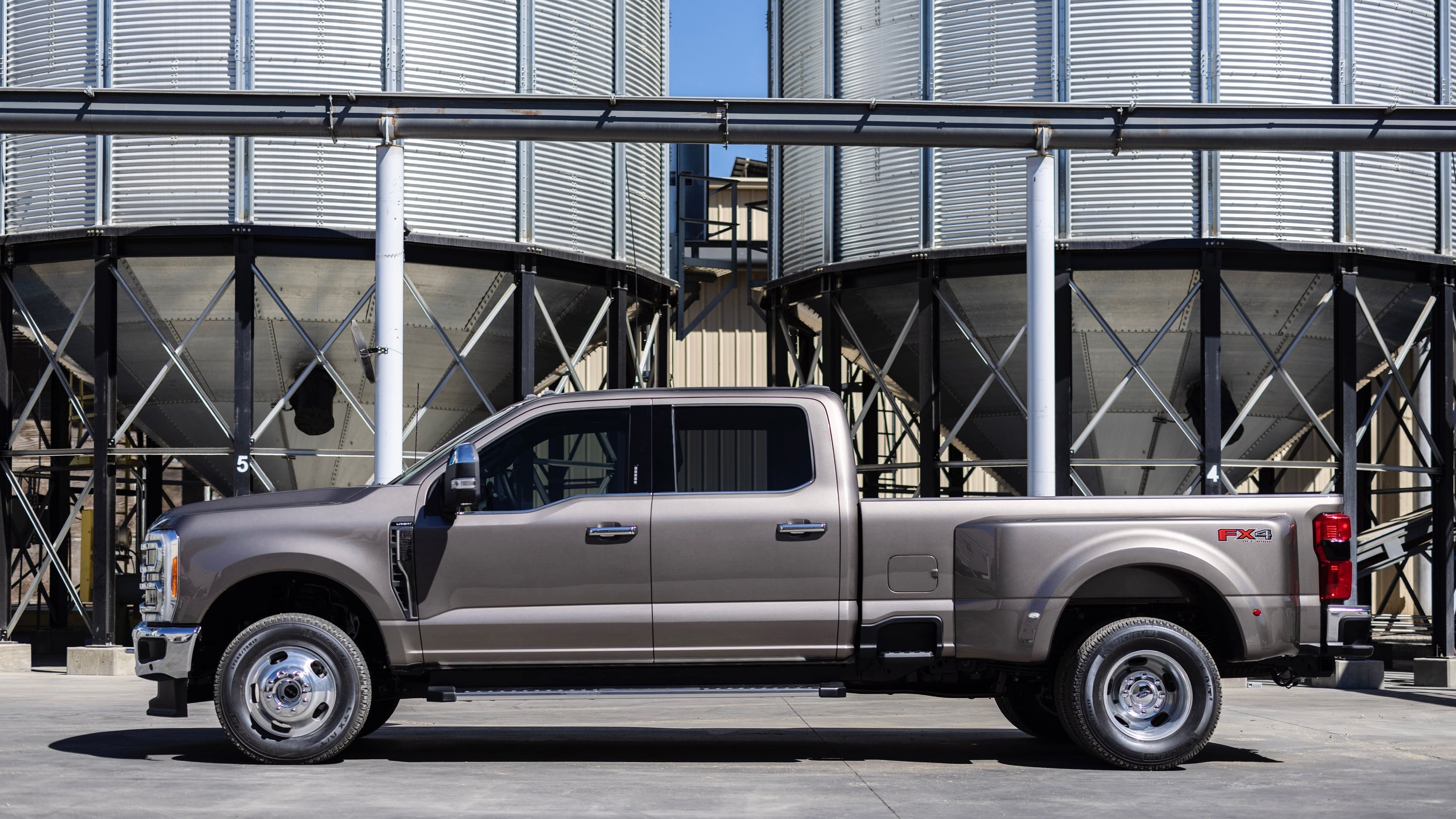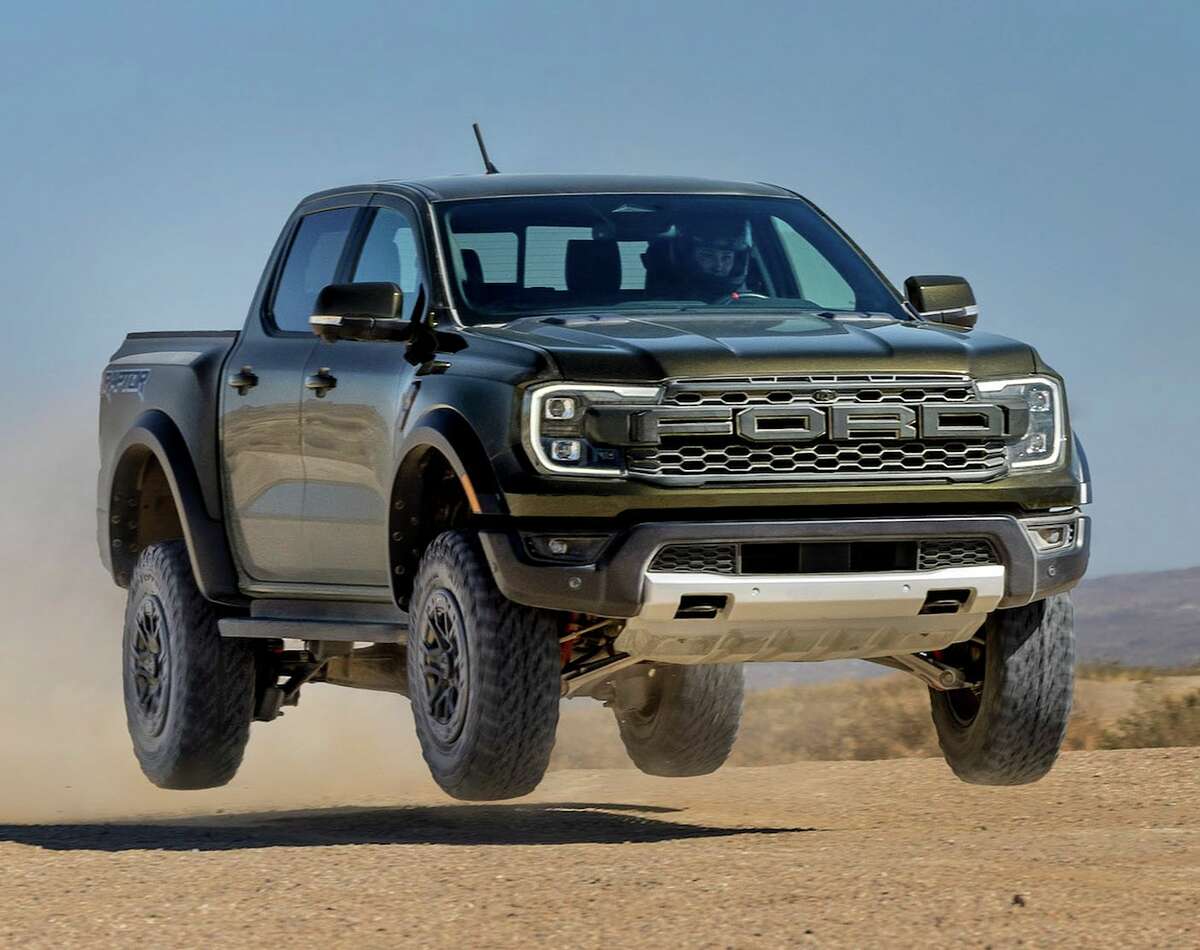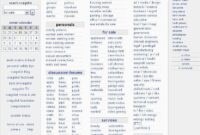Ford Ranger Flatbed Plans: Unleashing Ultimate Utility and Versatility cars.truckstrend.com
The Ford Ranger, a stalwart in the mid-size pickup truck segment, is renowned for its rugged capability and versatile nature. While its standard bed offers ample space for many, a growing number of owners are exploring the transformative potential of Ford Ranger Flatbed Plans. This endeavor involves replacing the conventional pickup box with a flat, open platform, dramatically enhancing the truck’s utility, accessibility, and customization potential. Far more than just a cosmetic change, a flatbed conversion turns your Ranger into an even more formidable workhorse, adventure rig, or specialized vehicle, opening up a world of possibilities for hauling, overlanding, and specialized equipment mounting.
This comprehensive guide will delve into the intricacies of Ford Ranger flatbed plans, exploring the benefits, design considerations, practical steps, and essential advice for anyone contemplating this significant upgrade.
Ford Ranger Flatbed Plans: Unleashing Ultimate Utility and Versatility
The Allure of the Flatbed Ranger: Why Make the Switch?
The decision to pursue Ford Ranger flatbed plans stems from a desire for enhanced functionality and adaptability. Here’s why many owners opt for this conversion:
- Unmatched Versatility: A flatbed offers an unencumbered loading surface, allowing you to haul oversized, irregularly shaped, or palletized items that would be impossible or difficult to fit in a conventional bed. From lumber and machinery to ATVs and camping gear, the possibilities are vastly expanded.
- Superior Accessibility: With no sidewalls or wheel wells, loading and unloading from any angle is significantly easier. This is particularly beneficial for forklifts, cranes, or even manual loading from the side.
- Increased Payload Potential (Optimized Space): While not increasing the Ranger’s Gross Vehicle Weight Rating (GVWR), a flatbed often weighs less than a standard bed, effectively increasing the usable payload capacity. More importantly, the flat, uninterrupted surface allows for more efficient stacking and securing of cargo.
- Customization Beyond Limits: Flatbeds are blank canvases. They lend themselves perfectly to custom toolboxes, under-deck storage, water and fuel tanks, spare tire mounts, integrated lighting, and specialized racks for ladders, kayaks, or even full-blown camper setups.
- Off-Road Advantages: For off-road enthusiasts, the improved departure angle due to the shorter overhang of many flatbed designs can be a game-changer. The ability to mount essential recovery gear, fuel, and water tanks securely and accessibly is also a major plus.
- Enhanced Aesthetics (Subjective): For many, the utilitarian, robust look of a flatbed Ranger is aesthetically pleasing, signaling a truck built for serious work or adventure.

Navigating Flatbed Designs: From Basic to Bespoke
When considering Ford Ranger flatbed plans, understanding the various design elements is crucial. Flatbeds aren’t one-size-fits-all; they can be tailored to specific needs.
- Frame/Subframe: This is the skeleton of the flatbed, typically constructed from steel or aluminum tubing or channel. It bolts directly to the Ranger’s chassis, replacing the factory bed mounts.
- Decking Material: The surface of the flatbed, often made from diamond plate steel, smooth aluminum, wood planks (like treated pine or hardwood), or composite materials. Each has unique properties regarding weight, durability, grip, and cost.
- Headache Rack: A crucial safety feature, this vertical structure behind the cab protects occupants from shifting cargo and provides a mounting point for lights, antennas, or tool racks.
- Side Rails/Drop Sides: While "flat," many designs incorporate short, removable side rails or hinged drop sides for securing smaller loads or creating a more contained space.
- Under-Deck Storage: Integrated toolboxes or compartments mounted beneath the flatbed surface provide secure, weatherproof storage without consuming deck space.
- Integrated Lighting: Factory taillights are often replaced with new LED lights integrated into the flatbed structure, ensuring compliance and visibility.


DIY or Professional? Weighing Your Flatbed Options
Deciding between a DIY build and professional installation is a significant part of Ford Ranger flatbed plans.
-
DIY (Do-It-Yourself):
- Pros: Potentially lower cost (saving on labor), immense satisfaction, complete control over design and materials, opportunity to learn fabrication skills.
- Cons: Requires significant welding and fabrication skills, specialized tools (welder, grinder, plasma cutter), considerable time commitment, potential for errors if inexperienced, no professional warranty.
- Best For: Individuals with strong mechanical aptitude, welding experience, access to tools, and ample time.
-
Professional Installation:
- Pros: High-quality fabrication and finish, adherence to safety standards, professional warranty, less time commitment for the owner, access to specialized designs and materials.
- Cons: Significantly higher cost due to labor and overhead, less control over minute details unless specified.
- Best For: Those who lack the skills, tools, or time for a DIY project, or prefer a guaranteed professional outcome.
Regardless of the path, it’s vital to acquire detailed Ford Ranger flatbed plans, whether from online resources, specialized vendors, or custom fabricators. These plans provide critical dimensions, material lists, and structural integrity guidelines.
Critical Pre-Build Planning: Essential Considerations
Before cutting metal or placing an order, thorough planning is paramount for successful Ford Ranger flatbed plans.
- Legal Compliance: Flatbed dimensions (width, length), lighting requirements, and overall vehicle modifications must comply with local and national road regulations. Research these thoroughly.
- Weight Distribution and GVWR: Understand your Ranger’s Gross Vehicle Weight Rating (GVWR) and axle ratings. The flatbed’s weight, plus any cargo, must not exceed these limits. Improper weight distribution can negatively impact handling, braking, and tire wear.
- Suspension Upgrades: Depending on the flatbed’s weight and intended payload, suspension upgrades (e.g., heavier leaf springs, airbags, or aftermarket shocks) might be necessary to maintain ride height and handling.
- Vehicle Electronics and Wiring: The factory taillights, reverse lights, and potentially license plate lights will need to be rewired and integrated into the new flatbed. This often requires extending wiring harnesses and ensuring proper connections to avoid electrical issues.
- Dimensions and Fitment: Carefully measure your Ranger’s frame rails and available space to ensure the flatbed plans you choose or design will fit correctly without interfering with the cab, fuel tank, or exhaust. Consider wheel well clearance if building a "tray" style flatbed that extends over the wheels.
A Step-by-Step Overview: Building Your Ranger Flatbed
While a detailed step-by-step guide is beyond this article’s scope, here’s a general overview of the process involved in Ford Ranger flatbed plans:
- Remove the Factory Bed: Disconnect all wiring, fuel filler, and mounting bolts. Carefully lift and remove the old bed.
- Clean and Prepare the Frame: Inspect the Ranger’s chassis for rust or damage. Clean the frame rails thoroughly where the new flatbed will mount.
- Fabricate the Subframe: Based on your Ford Ranger flatbed plans, cut and weld the steel or aluminum components for the flatbed’s subframe. Ensure it’s square, level, and structurally sound.
- Mount the Subframe: Position the subframe on the Ranger’s chassis and securely bolt it into place using appropriate hardware and mounting plates.
- Install Decking: Attach your chosen decking material (steel plate, aluminum, wood) to the subframe. Ensure it’s securely fastened and flush.
- Add Features: Install the headache rack, side rails (if desired), under-deck toolboxes, and any other structural components.
- Wiring and Lighting: Run new wiring for taillights, brake lights, turn signals, reverse lights, and license plate lights. Mount the new lights securely. Test all electrical connections thoroughly.
- Finish and Protect: Sand, prime, and paint or powder coat the flatbed frame to prevent rust and provide a durable finish. Apply a protective coating to wood decking if used.
- Final Checks: Double-check all bolts, wiring, and structural components. Perform a test drive to ensure everything feels secure and functions correctly.
Materializing Your Vision: Choosing the Right Decking and Frame
The choice of materials significantly impacts the flatbed’s weight, cost, durability, and aesthetics.
- Steel:
- Pros: Extremely strong, durable, relatively inexpensive, easy to weld.
- Cons: Heavy, susceptible to rust (requires proper coating), can be slippery when wet.
- Aluminum:
- Pros: Lightweight (improves payload capacity and fuel economy), corrosion-resistant, good strength-to-weight ratio.
- Cons: More expensive than steel, requires specialized aluminum welding, can be less impact-resistant than steel.
- Wood (e.g., Treated Pine, Oak):
- Pros: Aesthetically pleasing, good grip, easy to work with, relatively inexpensive for decking.
- Cons: Requires regular maintenance (sealing, staining), susceptible to rot and warping, less durable than metal for heavy abuse, heavier than aluminum.
- Composite Materials:
- Pros: Lightweight, highly durable, weather-resistant, no rust, can mimic other materials.
- Cons: Very expensive, can be difficult to repair if damaged, less common for flatbed decking.
Enhancing Functionality: Customization and Accessories
One of the greatest benefits of Ford Ranger flatbed plans is the potential for extensive customization:
- Under-Deck Toolboxes: Keep tools, straps, and small equipment secure and out of the elements.
- Integrated Fuel/Water Tanks: Essential for extended adventures or remote work.
- Removable Side/Rear Gates: Offer flexibility for different cargo types.
- Custom Racks: Designed for specific gear like ladders, kayaks, bicycles, or even a rooftop tent.
- Auxiliary Lighting: Work lights, reverse lights, or scene lighting for improved visibility.
- Spare Tire Mounts: Securely store a full-size spare, especially for off-road use.
- Canopies/Campers: Transform your flatbed into a fully enclosed utility body or a dedicated living space for overlanding.
Maintaining Your Flatbed: Ensuring Longevity and Performance
Proper maintenance ensures your flatbed remains safe and functional for years to come.
- Regular Inspections: Periodically check all mounting bolts for tightness, especially after the first few hundred miles. Look for cracks in welds or frame components.
- Rust Prevention: For steel flatbeds, regularly inspect the paint/coating for chips or scratches and touch them up promptly to prevent rust.
- Decking Care: For wood decking, reapply sealants or stains as needed. For metal decking, keep it clean to prevent buildup and ensure proper grip.
- Electrical Checks: Verify all lights are functioning correctly. Inspect wiring for chafing or damage.
Overcoming Challenges: Common Hurdles and Solutions
Even with meticulous Ford Ranger flatbed plans, challenges can arise.
- Wiring Complexity: Modern Rangers have complex electrical systems. Solution: Use high-quality, weather-sealed connectors and consult wiring diagrams or a professional auto electrician.
- Weight Issues: An overly heavy flatbed can reduce payload capacity or require costly suspension upgrades. Solution: Optimize material choices (e.g., aluminum), stick to efficient designs, and accurately calculate weight during planning.
- Legal Compliance: Varying regulations can be confusing. Solution: Consult local DMV/transport authorities early in the planning process.
- Fabrication Skills: If DIY, lack of experience can lead to structural weaknesses. Solution: Practice welding on scrap metal, invest in good quality tools, and consider taking a welding course. If unsure, hire a professional.
Ford Ranger Flatbed Plans: Estimated Cost Breakdown
The cost of a Ford Ranger flatbed conversion can vary wildly depending on whether you DIY or hire a professional, and the materials and features chosen. This table provides estimated ranges for various components and services.
| Item/Service | Description | Estimated Cost Range (USD) | Notes |
|---|---|---|---|
| Flatbed Plans/Blueprints | Detailed designs, measurements, and material lists for DIY builds | $50 – $300 | Essential for a well-planned DIY project. |
| DIY Materials (Steel) | Steel tubing, channel, plate for frame & decking | $800 – $2,000 | Varies by steel type, gauge, and quantity. |
| DIY Materials (Aluminum) | Aluminum tubing, plate for frame & decking | $1,500 – $4,000+ | Lighter, corrosion-resistant, but more expensive. |
| Wood Decking | Treated lumber, oak, or other suitable wood for the deck | $200 – $600 | Cost-effective, but requires maintenance. |
| Professional Fabrication | Labor for custom flatbed design and welding (basic to complex) | $3,000 – $8,000+ | Varies significantly based on complexity, materials, and shop rates. |
| Headache Rack | Material & fabrication/purchase (can be integrated into build) | $200 – $800 | Crucial safety feature. |
| Under-Deck Toolboxes | Pair of integrated, weather-sealed storage boxes | $300 – $1,500 | Adds secure storage; price varies by size and material. |
| LED Lighting Kit | Taillights, brake, turn, reverse, license plate lights, wiring harness | $150 – $500 | Essential for legal compliance. |
| Paint/Powder Coating | Professional finishing for rust prevention and aesthetics | $400 – $1,200 | Highly recommended for steel builds. |
| Suspension Upgrades | Heavier leaf springs, airbags, or performance shocks (optional) | $500 – $2,000+ | Recommended for heavy loads or off-road use; varies by component. |
| Miscellaneous Hardware | Bolts, nuts, washers, welding consumables, grinding discs, wiring supplies | $100 – $300 | Small but essential items. |
| Total Estimated Cost | DIY Project | $1,500 – $5,000+ | Assumes some existing tools/skills. |
| Total Estimated Cost | Professionally Built/Installed | $4,000 – $12,000+ | High-end custom builds can exceed this. |
Note: These are estimates and can vary based on geographic location, material costs, specific design complexities, and individual choices.
Frequently Asked Questions (FAQ) about Ford Ranger Flatbed Plans
Q1: Is it legal to put a flatbed on a Ford Ranger?
A1: Yes, in most regions, it is legal, but you must ensure it complies with local and national regulations regarding dimensions (width, length), lighting (all required lights must be functional and visible), and overall vehicle safety standards. Always check your local Department of Motor Vehicles (DMV) or equivalent transport authority.
Q2: How much weight can a Ford Ranger flatbed carry?
A2: The flatbed itself does not increase the Ranger’s maximum payload capacity. This is determined by the truck’s Gross Vehicle Weight Rating (GVWR) minus its curb weight. However, a flatbed often weighs less than a factory bed, effectively allowing you to carry more cargo weight within the existing GVWR. Always adhere to your Ranger’s manufacturer-specified payload limits.
Q3: Will I need to upgrade my suspension after installing a flatbed?
A3: It depends on the weight of the flatbed and the typical loads you plan to carry. If the new flatbed is significantly heavier than the factory bed, or if you consistently haul heavy loads, suspension upgrades (like heavier-duty leaf springs, airbags, or aftermarket shocks) may be necessary to maintain proper ride height, handling, and prevent sagging.
Q4: How long does a Ford Ranger flatbed conversion typically take?
A4: For a DIY project, it can range from a few weekends to several weeks or even months, depending on your skills, available tools, the complexity of the design, and your spare time. Professional installations typically take 1-3 weeks, depending on the fabricator’s schedule and the customization involved.
Q5: Can I use my existing taillights with a flatbed?
A5: In most cases, no. The factory taillights are integrated into the original bed. You will need to install new taillights, brake lights, turn signals, reverse lights, and license plate lights into the flatbed structure. This involves extending and re-routing the wiring harness.
Q6: What’s the best material for a Ford Ranger flatbed?
A6: There’s no single "best" material; it depends on your priorities. Steel is strong and cost-effective but heavy and prone to rust. Aluminum is lightweight and corrosion-resistant but more expensive and requires specialized welding. Wood is aesthetically pleasing and offers good grip but requires more maintenance and is less durable than metal.
Q7: Will installing a flatbed void my Ford Ranger’s warranty?
A7: Modifying your vehicle, especially structural changes like a flatbed conversion, can potentially void parts of your factory warranty related to the bed, frame, suspension, and electrical system if the modification is deemed the cause of a failure. It’s advisable to consult with your Ford dealership before undertaking such a significant modification.
Q8: How does a flatbed affect fuel economy?
A8: The impact on fuel economy can vary. A lighter flatbed (e.g., aluminum) might slightly improve it or keep it similar. A heavier steel flatbed could slightly decrease it. Aerodynamics also play a role; a completely open flatbed might have different airflow characteristics than a standard bed with a tailgate.
Conclusion
Embarking on Ford Ranger flatbed plans is a significant undertaking that promises to transform your pickup into a highly specialized and incredibly capable machine. Whether you’re a tradesperson needing unparalleled hauling flexibility, an off-road enthusiast seeking enhanced utility, or simply someone who appreciates the rugged aesthetic, a flatbed conversion can unlock your Ranger’s full potential.
By carefully considering design, materials, legal aspects, and the choice between DIY and professional installation, you can create a custom flatbed that perfectly suits your needs. The journey from a standard bed to a custom flatbed is not just a modification; it’s an evolution, turning your Ford Ranger into a truly unique and supremely functional vehicle ready for any challenge you throw its way.




